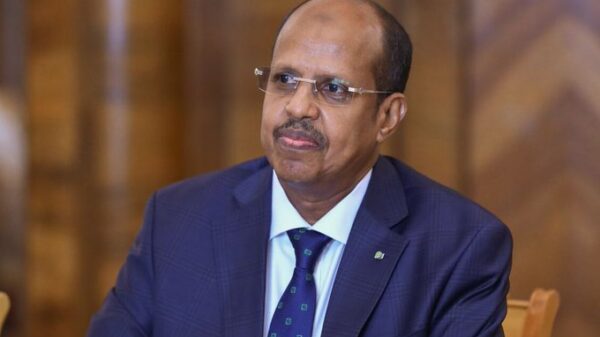
The National Intelligence Council, in its first assessment in four years aimed at shaping US strategic thinking, said China will surpass the United States as the largest economy in the 2020s, in line with independent forecasts/AFP
The National Intelligence Council, in its first assessment in four years aimed at shaping US strategic thinking, said China will surpass the United States as the largest economy in the 2020s, in line with independent forecasts.
But the study said that the United States, while weaker, will probably remain the top player in two decades thanks to its role in resolving global crises, its technological prowess and its “soft power” that attracts outsiders.
“The US most likely will remain ‘first among equals’ among the other great powers in 2030 because of its preeminence across a range of power dimensions and legacies of its leadership role,” the 137-page report said.
“Nevertheless, with the rapid rise of other countries, the ‘unipolar moment’ is over and Pax Americana — the era of American ascendancy in international politics that began in 1945 — is fast winding down,” it said.
The study predicted that Asia’s economy, military spending and technological investment would surpass those of North America and Europe combined by 2030, but warned of major uncertainty over an emerging China.
“If Beijing fails to transition to a more sustainable, innovation-based economic model, it will remain a top-tier player in Asia, but the influence surrounding what has been a remarkable ascendance will dissipate,” it said.
China’s global power is likely to keep rising but at a slower rate — a phenomenon of easing growth that, according to historical precedent, makes countries “likely to become fearful and more assertive,” the study said.
If tensions keep rising in Asia, more nations will embrace US leadership and China “can be its own worst enemy,” the report’s lead author Mathew Burrows told reporters.
Europe, Japan and Russia are expected to remain in slow economic decline through 2030, while a number of middle-tier countries could rise, such as Colombia, Egypt, Indonesia, Iran, Mexico, South Africa and Turkey, it said.
The study expects major benefits from technology by 2030, but warned that climate change posed serious challenges.
With a growing population and rising incomes, the planet’s demand for water, food and energy will grow by 35, 40 and 50 percent respectively by 2030.
“We are not necessarily headed into a world of scarcities, but leaders will need to act to avert such a future,” said Christopher Kojm, chairman of the National Intelligence Council.
A wealthier China and India will likely need to rely more on food imports, driving up international prices. Families in low-income nations will feel the pinch hardest on food, likely fueling social discontent, the study said.
The National Intelligence Council estimated that the world will have nearly 8.3 billion people in 2030, up from 7.1 billion now, but that the average age will be older — with potentially giant consequences.
The study said that 80 percent of armed and ethnic conflicts occurred in nations with youthful populations. The number of youthful states will fall significantly by 2030, with the bulk of the remaining ones in Africa.
Other countries that will still have youthful populations — and the fuel for potential conflict — include Afghanistan and western and tribal areas of Pakistan.
“In both those countries, youth bulges are large and, combined with slow growth, portend increased instability,” Kojm said.
India is in better shape thanks to stronger growth but will face challenges with young populations in the poorer northern states of Bihar and Uttar Pradesh, the report said.
By contrast, the study found that the Middle East “will be a very different place” in 2030 with the gradual aging of the youth bulge who took to the streets in the Arab Spring protests that brought down autocratic leaders.
But the report predicted instability in nations with rooted sectarian or other tensions such as Bahrain, Iraq, Libya and Syria along with Yemen, which the study predicted could break up for the second time.
The study doubted that Al-Qaeda would pose a threat in 2030, saying that terrorism by its nature alienates initial supporters.
“By 2030, we believe that the Islamic terrorism cycle may have exhausted itself,” Burrows said.
Iran was a question mark. The study expected “far-reaching instability” if Iran developed a nuclear weapon, but also said that a more pro-Western Iran could emerge due to public pressure and infighting within the clerical regime.











































